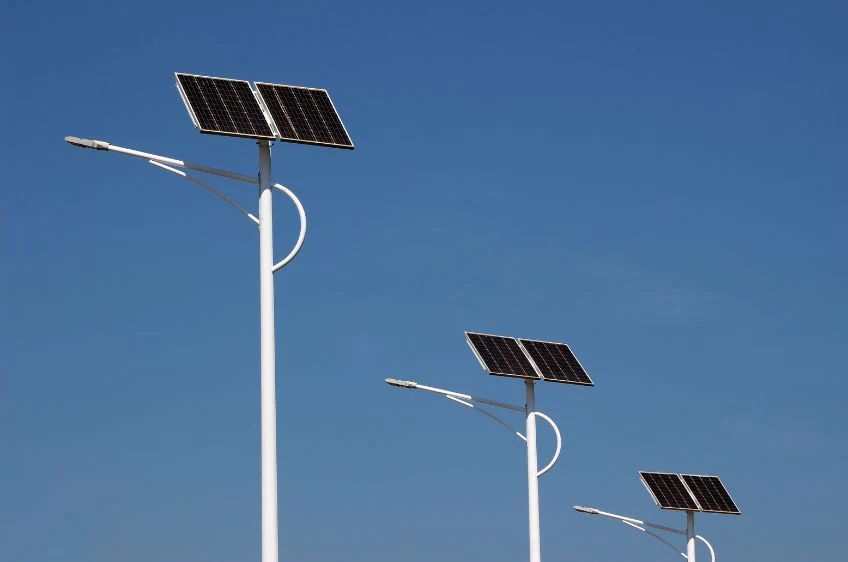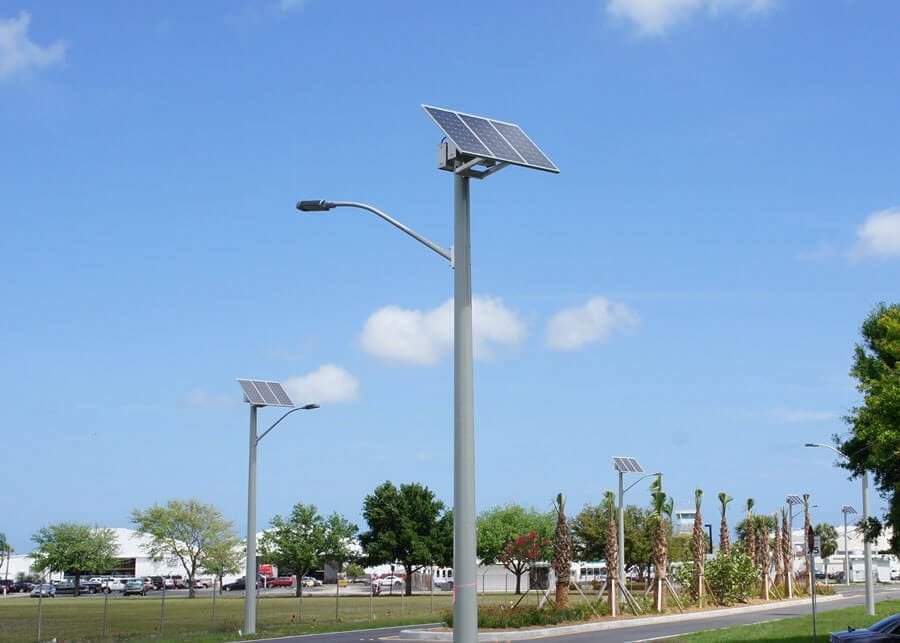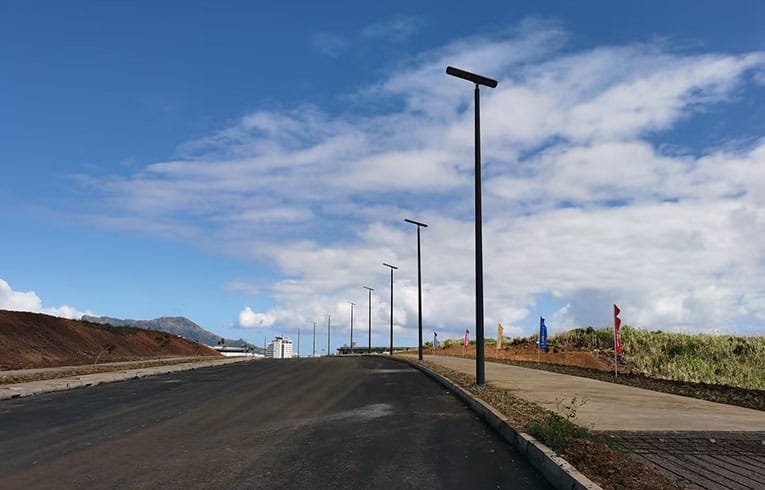When I first started working on infrastructure projects across Africa fifteen years ago, one of the biggest challenges I encountered was unreliable public lighting. Traditional grid-powered streetlights were costly to install, and in many regions, power supply was inconsistent. That’s when solar street lights became a game-changer—providing sustainable, reliable, and cost-effective outdoor lighting for roads, communities, and public spaces.
In this beginner’s guide, I’ll explain how solar street lights work, their main components, types, benefits, and some of the practical challenges I’ve seen on projects. Whether you’re a contractor, EPC consultant, or procurement officer evaluating solar solutions, this article will give you the practical insights you need to make informed decisions.
How Do Solar Street Lights Work? The Basics Explained
Solar street lights work by converting sunlight into electricity during the day, storing that energy in a battery, and then using it to power efficient LED lamps at night.
The process is simple but effective:
- Solar panels capture sunlight and generate direct current (DC) electricity.
- Charge controllers regulate the energy flow to prevent overcharging the battery.
- Batteries store the energy for nighttime use.
- LED lights consume the stored energy and provide bright, focused illumination.
From my project experience, I’ve noticed that today’s solar street lights are far more advanced than the models we installed a decade ago. Smart controllers now allow for dimming schedules, motion sensors, and even remote monitoring, making them more reliable and efficient for municipalities and private developments alike.
Key Components of a Solar Street Light System
A solar street light system is made up of several key components that work together to deliver reliable outdoor lighting. These include:
- Solar Panel – Captures sunlight and converts it into energy.
- Battery – Stores energy for nighttime use. Lithium batteries are increasingly common because they are lighter, longer-lasting, and faster to charge than lead-acid batteries.
- Charge Controller – Protects the battery from overcharging or deep discharging.
- LED Lamp – Provides bright, energy-efficient light with a long lifespan.
- Pole & Mounting Structure – Ensures stability and optimal panel positioning.
- Smart Features (Optional) – Motion sensors, remote monitoring, or adaptive dimming.
In one project we delivered for a rural district in Uganda, the choice of lithium batteries reduced maintenance costs by over 30% compared to older lead-acid systems. These kinds of practical improvements are what make modern solar street lights a strong investment.
Types of Solar Street Lights and Their Applications
There are different types of solar street lights designed for specific applications. Choosing the right one depends on your project’s location, budget, and lighting requirements.
Here are the most common types:
1. Integrated (All-in-One) Solar Street Lights
- Compact design with solar panel, battery, and LED in one unit.
- Easy to install, low maintenance.
- Best for small-scale projects, residential areas, and pathways.
2. Split-Type Solar Street Lights
- Solar panel and battery are separate from the LED fixture.
- Offers higher capacity and flexibility.
- Commonly used in highways, urban roads, and large public spaces.
3. Smart Solar Street Lights
- Equipped with motion sensors, remote control, and adaptive dimming.
- Suitable for modern cities and smart community projects.
| Type | Best Use Case | Advantages | Limitations |
|---|---|---|---|
| All-in-One | Residential streets, gardens, paths | Quick installation, compact | Limited power & battery size |
| Split-Type | Highways, city roads, large areas | More powerful, flexible design | Requires more installation work |
| Smart Systems | Smart cities, modern townships | Energy savings, remote control | Higher upfront cost |
Main Benefits of Using Solar Street Lights in Outdoor Projects
Solar street lights bring financial, environmental, and operational advantages that make them attractive for outdoor projects.
Here are the benefits I’ve seen most often in my work:
- Cost Savings – No electricity bills and reduced cabling/trenching costs.
- Sustainability – 100% renewable, reducing carbon emissions.
- Reliable Lighting – Works even in off-grid or power-shortage regions.
- Low Maintenance – Modern lithium batteries and LED technology extend service life.
- Scalable – Easy to add more units as communities expand.
One EPC client in Kenya told me their switch to solar street lights cut annual lighting expenses by 40% while also making the roads safer for night travel. These results make it clear why solar is fast becoming the default solution for outdoor lighting in Africa.
Common Challenges and How to Maintain Solar Street Lights
Like any technology, solar street lights come with challenges—but most can be solved with proper planning and maintenance.
- Shading Issues – Panels placed under trees or buildings reduce efficiency. Always assess site conditions before installation.
- Battery Lifespan – Lead-acid batteries may need replacement every 3–5 years, while lithium options can last 8–10 years.
- Vandalism or Theft – In some areas, poles and panels may be targeted; anti-theft designs and community ownership programs can help.
- Dust & Dirt Accumulation – Regular cleaning of panels ensures peak performance.
From my experience, the most successful projects are the ones where contractors train local teams on basic maintenance—simple actions like cleaning panels and checking batteries can extend the system’s life significantly.
Final Takeaway
Solar street lights are no longer a niche or experimental technology—they are a proven, cost-effective solution for outdoor lighting projects across Africa and beyond. By understanding how they work, their key components, types, benefits, and challenges, you can confidently decide which system best fits your project needs.
👉 If you’re planning a solar street lighting project, don’t just look at upfront costs. Evaluate battery technology, installation site, and long-term maintenance strategy to ensure maximum performance and return on investment.





